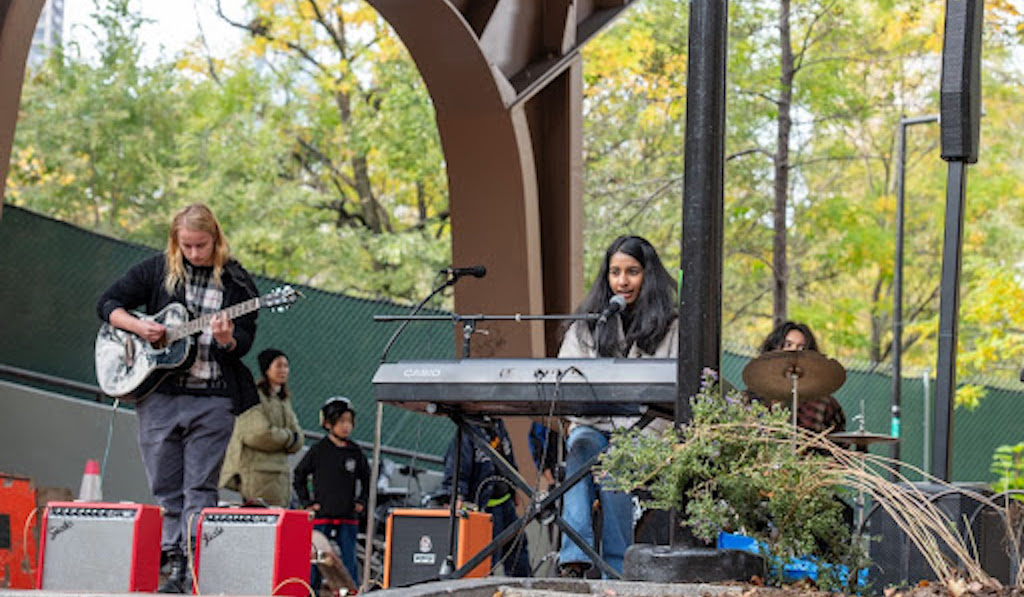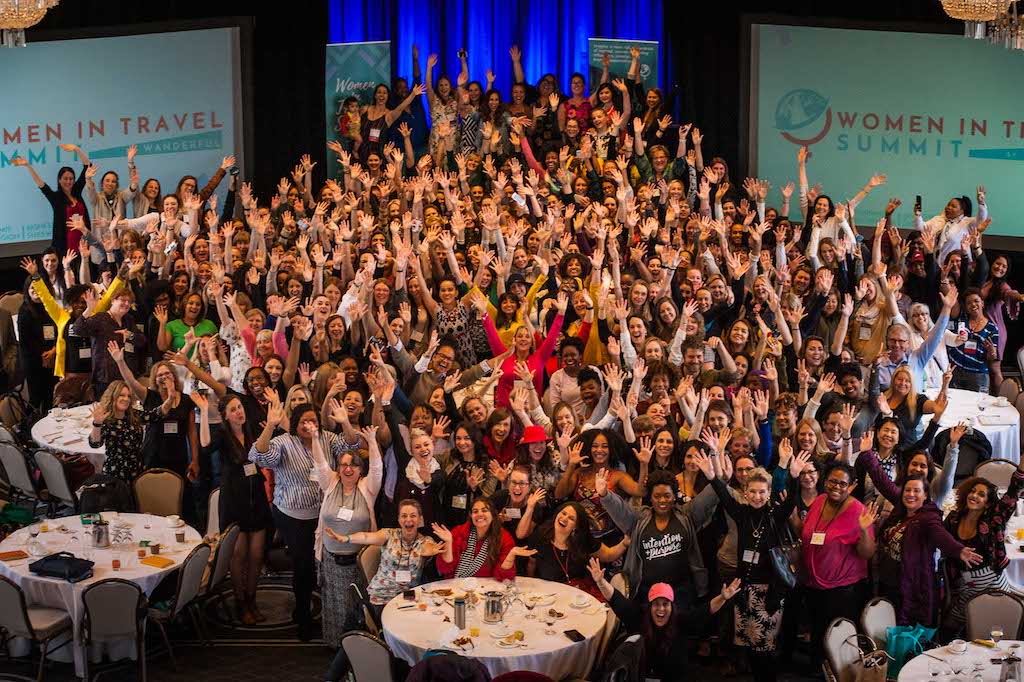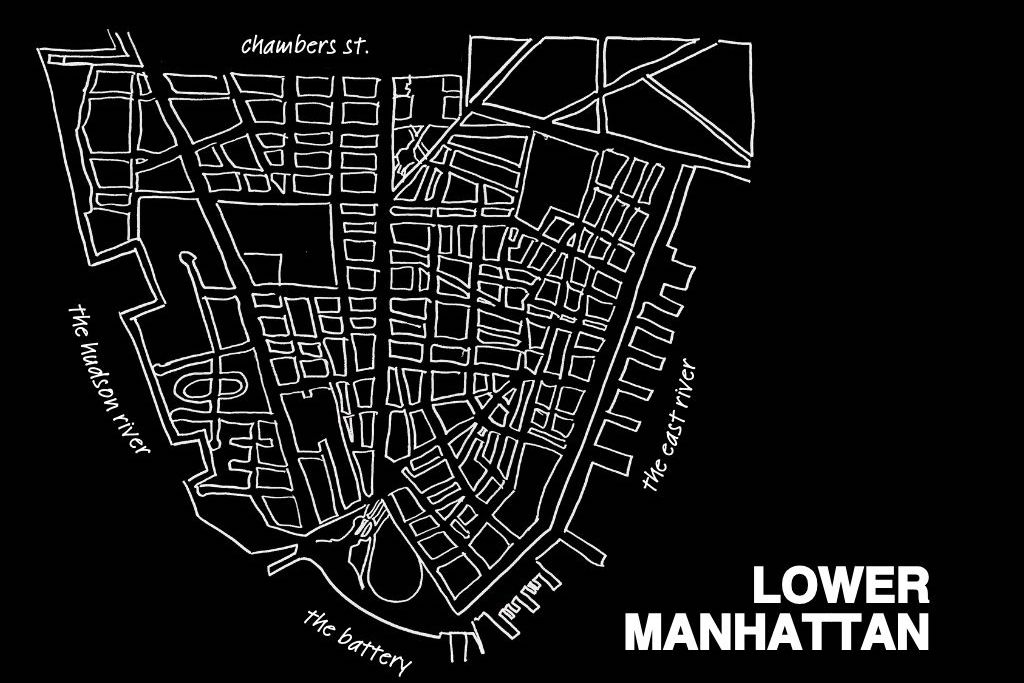Why Migratory Birds Love Lower Manhattan, and More Downtown Bird Facts From NYC Audubon

Some might be surprised to hear the words “bird conservation” and “New York City” in the same sentence, but the city is a biodiversity hotspot surrounded by incredible natural resources. Between full-time residents and snow birds, over 350 bird species can be found in the city each year, including Lower Manhattan’s favorite peregrine falcons at 55 Water St.
To learn more about the peregrine pair, we spoke with Dr. Dustin Partridge, director of conservation and science at NYC Audubon, an independent nonprofit focused on the conservation of wild birds in their habitat throughout the five boroughs that approaches preservation with a dedicated team of scientists, engagement groups and advocacy based in scientific research. For more on NYC Audubon, including volunteer opportunities, visit their website. (This interview has been lightly edited for clarity.)
What can you tell us about peregrine falcons?
Peregrines are fascinating. Where peregrines naturally nest is on cliffs or along ledges. That’s why they’re at 55 Water St. — it’s a great spot for them. They’re incredible aerial hunters who hunt migratory birds. They’re nesting right now because they’re planning for their young to hatch when the annual migration of 25 million birds comes through New York City so they have food available. They’re an amazing bird that takes advantage of the built environment in NYC — there are multiple pairs of peregrines throughout the city on many large buildings and some of the bridges, which are all tracked through DEP.
I encourage people to spend time learning their vocalizations because they have a pretty distinct call. You can use the Merlin Bird ID app from Cornell Lab of Ornithology to play their vocalizations. Pay attention when you’re outside and you’ll hear them. It’s a great way to connect with the natural world that surrounds us in the city that we often don’t think about. It’s also really fun if you want to go birding in the spring during that time when the peregrines are hunting for the migratory birds.
I’m surprised to hear there are so many migratory birds in NYC.
Two things result in the amount of migratory birds to the area: 1) NYC is positioned along the biodiverse Atlantic flyway, and then 2) we have artificial light at night, which attracts so many more birds.
The migratory birds are pretty incredible, too. They’re tiny little bright yellow birds in most cases that stop in NYC to basically refuel as they continue from where they spent their winter (in Central or South America or the Caribbean) north to the border to Canada. We have a window of April through the first three weeks of May to see them on their journey. They’re like little jewels throughout the trees in the city.
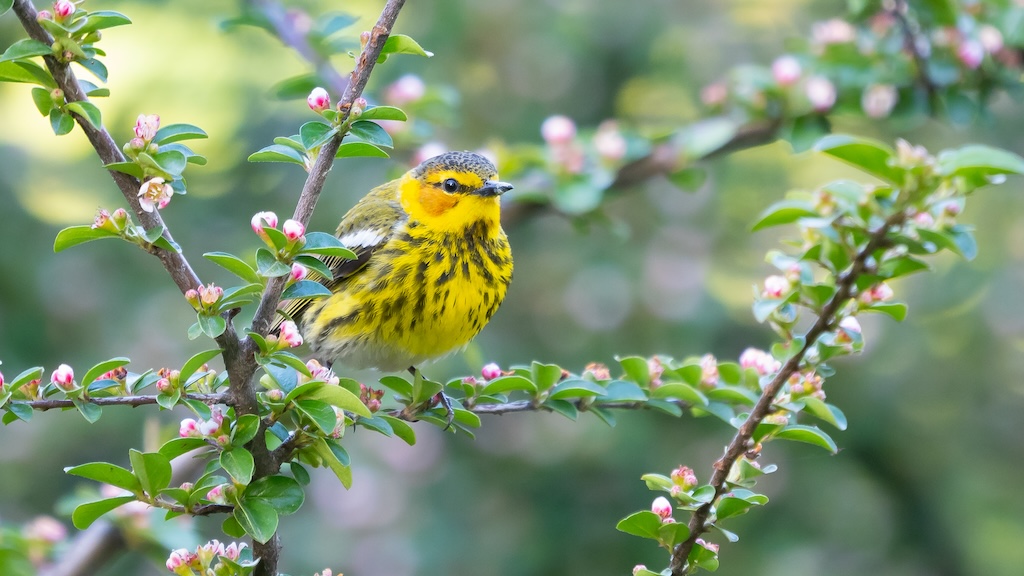
Cape May Warbler (photo credit: David Lei)
So far this season our mother falcon has laid four eggs. What else can we expect in the coming weeks?
Hopefully they all hatch, though that doesn’t always happen. But you’ll start seeing chicks, then you’ll start seeing the parents more actively hunting. Right now they’re trying to prepare themselves for having offspring, and in a few weeks they’ll have to feed their young. Hopefully we’ll have four very hungry peregrine chicks in that nest. What’s amazing is how fast they grow — and that requires a lot of food. So these peregrines are going to be out hunting over Lower Manhattan taking migratory birds, pigeons, whatever they can find back to the nest to feed their young. The young will grow about as big as the parents, then they’ll practice flying and you probably won’t see them again.
So we’ll see them grow to full size in their nest before they even take flight?
Yes, most young birds are about the same size as the adults before they can fly. But you can still see the differences between the adults and chicks each year based on their plumage. They’ll be very fluffy at first, and then once they start to fly, you’ll notice juveniles have different feather patterns once they lose the fluffy feathers they’re born with. You can go to All About Birds to see differences more clearly between juveniles and adults. They’re really adorable at first.
You will also see a lot of birds coming into the nest, because peregrines are top predators. So expect to see some feathers and other birds being eaten, but that is their role. They’re the fastest bird in the world, so they’re incredible hunters. It’s also why they were one of the first species to indicate that something was wrong with our ecosystems when DDT was in use in the 1950s to 1970s. Because they are a top level predator, poisons would build up in their bodies in small doses from the smaller birds they would eat and bioaccumulate, which would then lead to their eggs not being thick enough to withstand adults incubating (sitting on) them. They were losing many of their young and their population was crashing. They almost went extinct, but since the outlawing of DDT, their populations have been rebounding. They’re a really great case of a conservation success story.
But similar things are seen now with other raptors in the city with a build up of rodenticide. When Flaco died, he had a build up of rodenticide in his system. When you see those rat boxes outside, they’re often filled with poison. The rats eat them, then the rats are picked up by other birds, and they often accumulate lethal amounts of rodenticide in their bodies.
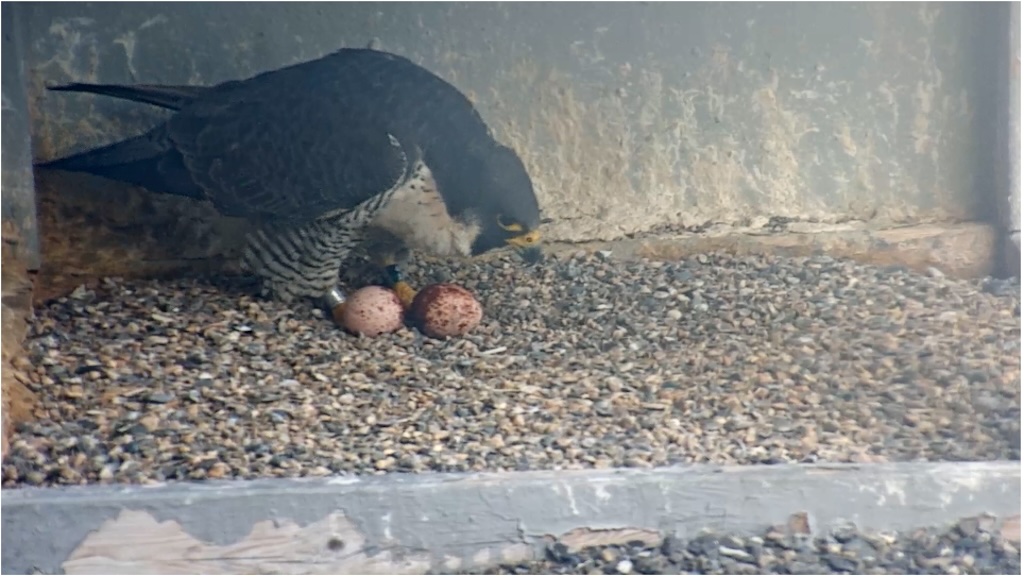
55 Water falcon and two of her eggs
So what do you suggest we do?
If we get rid of the food source for rats, that’s a better approach to control than trying to kill them. For the peregrines — because they’re mostly feeding on migratory birds — we should do our best to protect migratory birds that are coming through. And one of the best ways we can do that in the long term is to make windows visible to birds by applying film or 2 x 2” stickers on the outside of windows and turning our lights out at night. Artificial light at night during migration is incredibly disorienting to birds. When we have brightly lit lights at night like advertising or uplighting, or lighting in empty apartment buildings, that pulls in birds during migration. Sometimes they immediately collide with the building or sometimes they get disoriented and get stuck in the beams and circle around. So if we can protect those migratory birds, we will also be protecting the falcons that are nesting at 55 Water St.
Kind of like how lights are disorienting to baby sea turtles?
Exactly. Because lights, especially the broad amount of light we have now, is a fairly new phenomenon especially in terms of evolutionary scale. These animals have evolved, and gotten so used to these dark skies and migrating with the moon and stars and magnetic fields, then all of a sudden we introduce these brightly lit glows. Just like how you see insects circling around bright lights at night, the same thing happens with birds.
The Tribute in Light at the 9/11 Memorial is a really powerful example of the power of artificial light at night, especially in Lower Manhattan. If you’ve ever looked at it from afar you’ve probably seen these little white specks in the light — those are actually all birds. We work onsite to partner with the 9/11 Memorial & Museum and the production company to make sure the event is bird safe. Our team of scientists and volunteers will be on site every year and we advise when to turn the lights off (every 15 minutes)…it’s critical or else the birds will remain stuck.
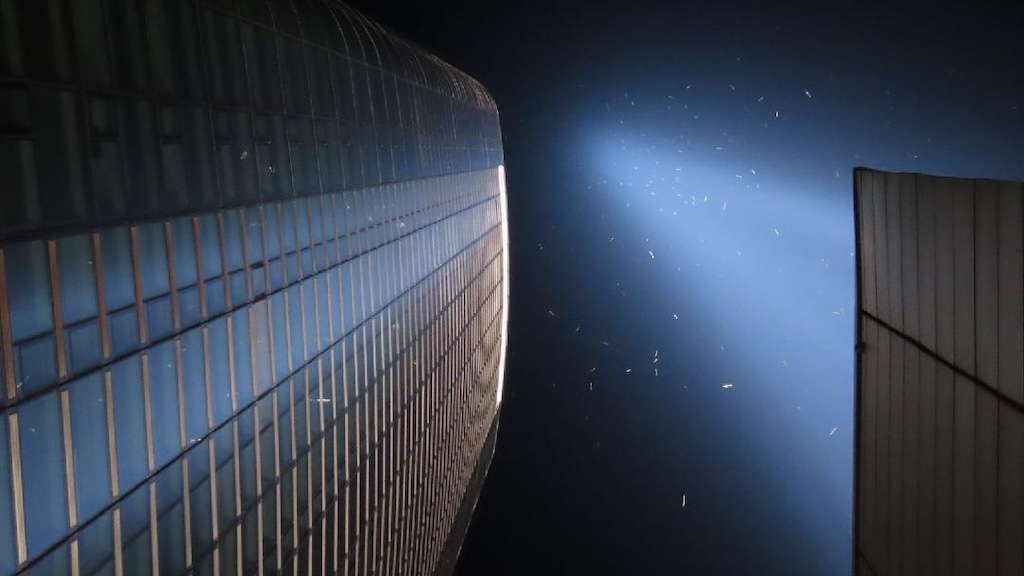
Tribute in Light in 2023 (photo credit: Elias Markee)
I know the Alliance has been following the falcons at 55 Water St. for years. How long do they live, and would it be the same pair returning to a nest year after year?
They usually do use the same nest, so the same pair can be expected to come back, or at least an individual from that pair. They do live quite a long time. The oldest recorded peregrine was almost 20 years old, and they’ll reuse a site for a long time. So it’s probably the same pair that’s coming back for the most part. If one of them dies outside of breeding season, they will find a new mate. Quality nest sites do become reused over time, but it’s unlikely that a juvenile from a nest will return to the same nest site.
Do you have any other good examples of conservation techniques you’ve seen in Lower Manhattan?
When it comes to raising young, one of the things that’s most important for these birds is that they have resources available to them. They will eat a large variety of other birds. Occasionally they’ll steal prey like rodents. There are some real great examples of bird friendly design downtown that have been installed to protect peregrine prey. For example, the Port Authority has just installed the “feather friendly” film at their Brookfield Place Terminal, which removed the risk of collisions at that site. They also did so at Liberty Park on a glass barrier that was identified to be a high risk site. Other parts of Brookfield properties have installed bird safe film as well. And those have been incredibly successful in terms of reducing collisions. Making glass bird safe is something that’s very tangible and can save thousands of birds by fixing single facades.
Similarly, there are good efforts to reduce rodenticide outside, which is helpful to raptors like peregrines. As well as the promotion of quality green spaces…which is really important because especially in Lower Manhattan where there are bright lights and it’s right near the water, a really high number of birds move through. And having green space for those smaller migratory birds to forage in is really beneficial.
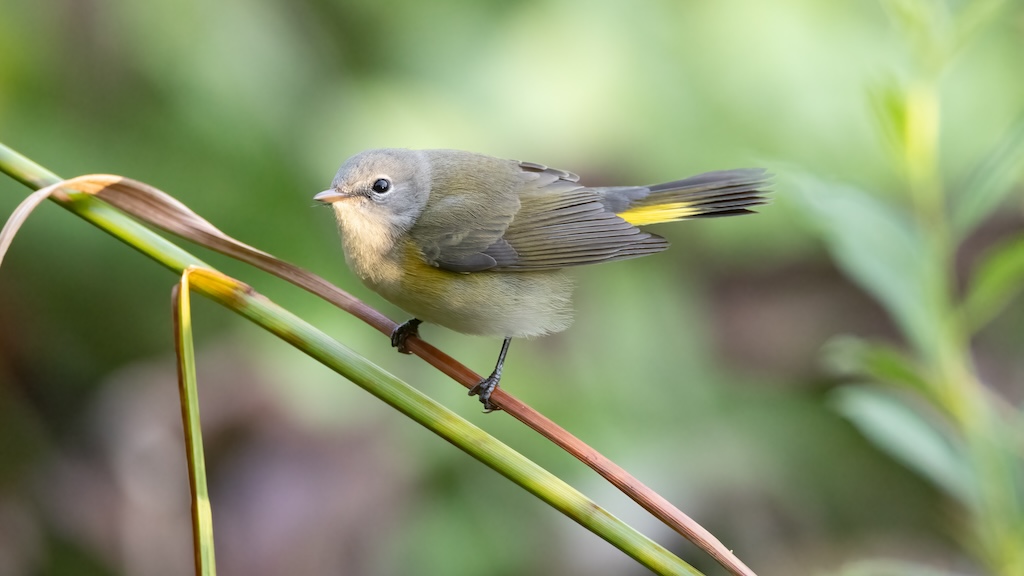
An American Redstart in Brooklyn Bridge Park (photo credit: Mike Yuan)
In a broader sense, why is it so important to protect these birds?
First of all, as New Yorkers, it’s just really nice to see them and connect with nature in that way, which is why we’re all glued to this peregrine cam! Aside from that, they are an indicator species. These birds can often tell us what’s happening in the world and how healthy our systems are.
Beyond that, birds play an important role in our ecosystems including pest control. They save us so much money by controlling pests throughout agricultural areas and reducing disease spread by stopping pests from infecting us. They also play a significant role in carbon sequestration and maintaining healthy forests. Especially in Lower Manhattan where climate risks are very real and present, birds can help offset the impact of the climate crisis by helping forests from Canada to the tropics grow and be healthy and take carbon out of the atmosphere. Birds eat seeds and they spread seeds. If a pest breaks out, birds will use the pests for food, which will reduce impacts on forests. Birds have many impacts that benefit not only local systems, but us as humans.
Any last thoughts for our downtown readers?
The downtown area is one of the sites where the majority of bird collisions happen in NYC because of the high density of glass and lights, so you can have a really significant impact just by fixing glass and turning lights out. We also have plenty of volunteer opportunities, if anyone wants to join.
main photo: Peregrine Falcon, photo credit Lloyd Spitalnik
Tags: 55 water falcons, 55 Water Street, peregrine falcons